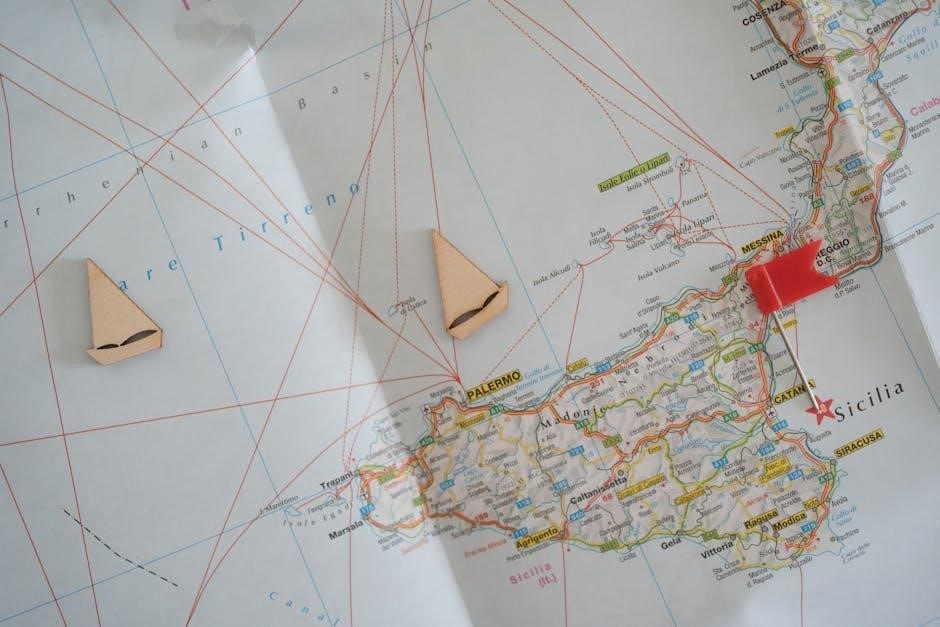
Understanding the importance of proper fit‚ the Shoei Size Guide offers a comprehensive solution to navigate shoe sizing complexities. It provides detailed conversion charts‚ measurement techniques‚ and brand-specific insights to ensure accurate fit for comfort and performance.

1.1 Understanding the Importance of Proper Shoe Fit
Proper shoe fit is essential for comfort‚ health‚ and performance. Ill-fitting shoes can cause pain‚ blisters‚ and long-term foot problems. A well-fitting shoe supports natural foot mechanics‚ ensuring optimal comfort during daily activities or sports. Incorrect sizing can lead to discomfort‚ affecting overall satisfaction. Many people wear shoes that are too small or too large‚ unaware of the negative impact on their foot health. Understanding the importance of proper fit helps in making informed decisions when selecting footwear‚ ensuring a balance between style‚ functionality‚ and comfort.
1.2 Overview of Shoei Size Guide
The Shoei Size Guide is a detailed resource designed to help users find their perfect shoe fit. It includes international size conversion charts‚ measurement tools‚ and brand-specific sizing information. The guide addresses common challenges such as varying sizes between brands and models‚ offering practical solutions. It emphasizes the importance of accurate measurements and provides step-by-step instructions for determining length and width. Additionally‚ it covers width considerations and common mistakes to avoid. This comprehensive tool ensures users can confidently select the right size‚ enhancing comfort and performance in their footwear choice.
International Shoe Size Conversion Charts
These charts provide a comprehensive guide to converting shoe sizes across regions‚ including US‚ UK‚ EU‚ Japan‚ and more‚ ensuring accurate fit and avoiding size mismatches globally.
2.1 US to UK Shoe Size Conversion
Converting US to UK shoe sizes is essential for international shoppers. Generally‚ US sizes are 1.5 to 2 sizes smaller than UK sizes. For example‚ a US size 8 corresponds to a UK size 6.5. This difference applies to both men’s and women’s sizes. To ensure accuracy‚ refer to detailed conversion charts‚ as slight variations may exist between brands. Measuring your foot length and comparing it to standard size guides can also help determine your correct size. Accurate conversion prevents discomfort and ensures a proper fit‚ whether shopping online or in-store across different regions.
2.2 EU to US Shoe Size Conversion
Converting EU to US shoe sizes involves understanding their numerical differences; EU sizes are typically 33-50‚ while US sizes range from 1-16. Generally‚ EU sizes are 33-35 for US 1-3‚ 36-38 for US 4-6‚ and 39-50 for US 7-16. For example‚ an EU 40 corresponds to a US 7. This conversion applies to both men’s and women’s sizes. However‚ variations exist between brands‚ so using a detailed size chart is recommended. Measuring foot length in centimeters and comparing it to EU and US standards ensures accuracy. This guide helps shoppers find their perfect fit across international brands and regions.
2.3 Japan to US Shoe Size Conversion
Converting Japanese shoe sizes to US sizes requires understanding their numerical differences. Japanese sizes are smaller than US sizes‚ with a typical range of 20-30 for men and 18-28 for women. For example‚ a Japan 22 corresponds to a US 6 for men‚ while a Japan 20 corresponds to a US 6 for women. Generally‚ Japanese sizes are 1.5 to 2 sizes smaller than US sizes. To ensure accuracy‚ use a detailed size chart and measure foot length in centimeters. This guide helps shoppers convert sizes seamlessly when purchasing shoes from Japanese and US brands.
2.4 Australia to US Shoe Size Conversion
Australian shoe sizes align closely with US sizes‚ making conversion straightforward. For men‚ an Australian size 8 equals a US 8‚ while for women‚ an Australian size 9 corresponds to a US 9. The numerical scale is consistent‚ with half sizes available for precise fit. To convert‚ simply match the Australian size to the US size‚ as there is no additional adjustment needed. This similarity simplifies shopping across both regions‚ ensuring a consistent fit whether purchasing domestically or internationally.
2.5 China to US Shoe Size Conversion
Converting Chinese shoe sizes to US sizes requires careful adjustment. Chinese sizes are typically smaller‚ so a US size 8 corresponds to a Chinese size 42. To find your US size‚ add 2 to the Chinese men’s size and 1.5 to women’s sizes. For example‚ a Chinese women’s size 38 equals a US size 7.5. This conversion ensures a proper fit when shopping internationally. Always refer to a detailed chart for accuracy‚ as slight variations may exist between brands.
2.6 Mexico to US Shoe Size Conversion
Mexican shoe sizes are similar to European sizes but differ from US standards. To convert Mexican sizes to US sizes‚ men should add 1 to 1.5 sizes‚ while women should add 2 sizes. For example‚ a Mexican men’s size 9 corresponds to a US size 10‚ and a Mexican women’s size 7 equals a US size 9. This conversion ensures a proper fit when shopping across borders. Always consult a detailed size chart for accuracy‚ as slight variations may occur between brands.
2.7 Korea to US Shoe Size Conversion
Korean shoe sizes are smaller than US sizes‚ requiring an adjustment for accurate fit. Men’s Korean size 270 corresponds to a US size 8‚ while women’s size 240 equals a US size 7. To convert‚ add 30 to the Korean size for men and 20 for women to approximate US sizing. For example‚ a Korean men’s size 280 is roughly a US size 9‚ and a women’s size 250 is about a US size 8. Always refer to a detailed conversion chart‚ as variations exist between brands and styles.

Measuring Your Foot Size
Accurate foot measurement is crucial for proper shoe fit. Use a ruler or Brannock device to measure length and width‚ ensuring comfort and preventing sizing errors.
3.1 Tools Needed for Measuring
To measure your foot size accurately‚ you’ll need a few simple tools. A flat surface‚ a ruler or Brannock device‚ and a piece of paper are essential. Place the paper on the floor‚ stand on it with your weight evenly distributed‚ and mark the longest and widest points of your foot. For added precision‚ use a flexible measuring tape or a digital foot scanner. Ensure you measure both feet‚ as they may differ slightly. Proper tools help ensure accurate measurements‚ which are vital for selecting the right shoe size.
3.2 Step-by-Step Measurement Guide
Start by placing your foot on a flat surface‚ ensuring it’s relaxed. Use a ruler or Brannock device to measure the longest point of your foot. Mark this length on a piece of paper. Next‚ measure the widest part of your foot‚ typically across the ball. Record both measurements. Repeat for the other foot‚ as sizes may differ. Use a flexible tape measure or caliper for width. Compare your measurements to a size chart to determine your shoe size. For accuracy‚ consider using a Brannock device‚ commonly found in shoe stores‚ to ensure precise length and width measurements.

3.3 Understanding Length and Width Measurements
Accurate foot measurements are crucial for proper shoe fit. Foot length is measured from the heel to the longest toe‚ while width is measured across the ball of the foot. These measurements help determine your shoe size and ensure comfort. Length measurements are typically used to identify your size‚ while width ensures the shoe isn’t too tight or loose. Different brands may vary slightly in their interpretations of these measurements‚ so comparing your measurements to a brand-specific chart is essential for the best fit. Proper alignment of length and width ensures optimal comfort and performance in your footwear.
Brand-Specific Sizing
Brand-specific sizing varies significantly‚ with each brand offering unique fits. Using TTS references from common models helps determine sizes across different styles and brands for optimal comfort.
4.1 Nike Shoe Size Guide
Nike offers a wide range of sizes‚ but sizing can vary between models. For example‚ running shoes like Air Force 1s may require sizing down by half‚ while SB Dunk Lows might need a half size up. Using your TTS in popular models like Jordan 1s as a reference helps determine the right fit for other styles. Nike’s size chart provides a general guide‚ but trying shoes in-store is recommended for accuracy. Additionally‚ Nike offers wide widths for those with broader feet‚ ensuring comfort and proper fit across their diverse product line.
4.2 Adidas Shoe Size Guide
Adidas sizing varies slightly across models‚ but generally aligns with standard measurements. For example‚ Yeezy 350s may require a half size up from your TTS in other brands‚ while Superstar sizes tend to fit true. Using a Brannock device or ruler‚ measure your foot length and width to find your ideal size. Adidas offers narrow‚ medium‚ and wide widths‚ catering to different foot shapes. When unsure‚ try shoes in-store or refer to user reviews for specific models. Ordering true-to-size is recommended for familiar styles‚ but adjustments may be needed for newer or less common designs based on feedback.
4.3 Converse Shoe Size Guide
Converse sizing tends to run consistent across its iconic models like Chuck Taylor All Star and One Star. Generally‚ they fit true to size‚ but some users find them slightly roomy. For those with wider feet‚ Converse offers a comfortable fit without needing to size up. Measure your foot length and compare it to the size chart to ensure accuracy. If unsure‚ trying them on in-store is recommended. Converse shoes are known for their durability and classic style‚ making them a popular choice for casual wear. Proper sizing ensures optimal comfort and support for all-day use.
4.4 Vans Shoe Size Guide
Vans shoes are known for their comfort and consistent sizing. Most models‚ like the Authentic and Old Skool‚ fit true to size‚ but some users find them slightly roomy. Vans offers half sizes and wide options‚ catering to various foot shapes. If you prefer a snug fit‚ consider staying with your usual size. For a relaxed feel‚ sizing up by a half size is recommended. Measure your foot length and compare it to Vans’ size chart for accuracy. Trying shoes on in-store is ideal‚ but online reviews can also guide your decision. Proper sizing ensures optimal comfort and support for all-day wear.

4.5 New Balance Shoe Size Guide
New Balance is renowned for its wide range of sizes‚ including narrow‚ standard‚ and wide widths. Their sizing is generally consistent across models‚ but some styles‚ like the 550‚ may run slightly large. To ensure the best fit‚ measure your foot length and compare it to New Balance’s size chart. If you prefer a snug fit‚ consider staying true to size‚ but if you like extra room‚ sizing up by a half size is advisable. Online reviews and in-store try-ons are recommended for accuracy. Proper sizing ensures comfort and support‚ making New Balance a reliable choice for various foot types and preferences.
4.6 Puma Shoe Size Guide
Puma shoes generally run true to size‚ but slight variations exist between models. For instance‚ the Puma Suede and Future series are known for their accurate fit‚ while the Fenty line may require sizing adjustments. To ensure the best fit‚ measure your foot length and compare it to Puma’s size chart. Consider your foot width‚ as Puma offers medium and wide options. Online reviews often highlight specific model fits‚ which can guide your decision. Trying shoes on in-store‚ if possible‚ is recommended for optimal comfort and performance. Proper sizing ensures Puma’s signature blend of style and functionality is fully realized.

Width and Fit Considerations
Proper width fit is crucial for comfort and performance. Shoes come in narrow‚ medium‚ and wide options‚ catering to different foot shapes. Ensure accurate sizing for optimal support.

5.1 Understanding Narrow‚ Medium‚ and Wide Widths
Shoes are available in narrow‚ medium‚ and wide widths to accommodate different foot shapes. Narrow widths suit slimmer feet‚ while wide widths provide extra room for comfort. Medium is the standard fit‚ suitable for most people. Understanding your foot width ensures proper support and prevents issues like cramped toes or excessive movement. Measuring both length and width accurately helps in selecting the right size. Brands often offer size charts‚ but variations exist‚ so trying shoes on or using online guides can help determine the best fit for your foot shape and comfort needs.
5.2 How to Determine Your Foot Width
To determine your foot width‚ measure the widest part of your foot using a ruler or a shoe size chart. Stand barefoot on a flat surface and mark the points where your foot is widest. Use a flexible measuring tape or a ruler to find the distance between these points. Compare this measurement to standard shoe width charts‚ which categorize widths as narrow‚ medium‚ or wide. This method ensures a precise fit‚ reducing discomfort and improving shoe performance. Accurate measurements help in selecting the right width‚ enhancing overall comfort and support for various activities.
5.3 Importance of Proper Width Fit
Proper width fit is crucial for comfort and performance‚ as it prevents issues like blisters‚ calluses‚ and foot deformities. Ill-fitting shoes can cause pain and hinder mobility‚ making accurate width measurement essential. A correct fit ensures toes have enough space to move naturally‚ while the shoe provides necessary support. Proper width fit also prevents excessive pressure on the foot‚ reducing the risk of long-term foot problems. By ensuring the right balance between length and width‚ you can enjoy optimal comfort and support‚ whether for daily activities or athletic pursuits.

How to Choose the Right Shoe Size
Choosing the right shoe size involves trying shoes in-store‚ using online size guides‚ and considering brand-specific fits. Ensure comfort and support by selecting the perfect fit for your needs.
6.1 Trying Shoes On In-Store
Trying shoes on in-store is the most reliable way to ensure a perfect fit. Visit a local shoe store to test different sizes and brands‚ as sizing can vary significantly. Many brands offer in-store sizing tools or expert fitters to help determine your accurate size. This method allows you to assess comfort‚ support‚ and how the shoe feels during walking. It’s also a great opportunity to compare multiple styles side by side. Remember‚ your foot size can change over time‚ so regular in-store fittings are recommended for the best results.
6.2 Using Online Size Guides and Reviews
Online size guides and customer reviews are invaluable for finding your perfect fit. Many websites offer detailed size charts‚ conversion tools‚ and brand-specific sizing tips. Reading reviews from other customers can provide insights into how a shoe fits‚ helping you decide whether to size up or down. Additionally‚ some platforms allow users to filter reviews by shoe size‚ offering a more personalized perspective. While online tools are helpful‚ they should be used alongside in-store fittings for the most accurate results. This combination ensures comfort and satisfaction with your purchase.
6.3 Considering Different Brands and Models
Different brands and models often have unique sizing standards‚ making it essential to research specific guides. For example‚ Nike‚ Adidas‚ and New Balance may vary in fit‚ even within the same size. Users frequently reference their “True to Size” (TTS) experience in popular models to guide others. Trying shoes in-store is highly recommended to ensure accuracy. Additionally‚ brand-specific size charts and customer reviews can provide valuable insights. By understanding these variations‚ shoppers can make informed decisions‚ ensuring a comfortable and proper fit tailored to their preferred brand and style.
Common Mistakes in Shoe Sizing
Common errors include assuming all brands size similarly‚ not measuring both feet‚ and ignoring width. These oversights can lead to discomfort and poor fit‚ emphasizing the need for accurate measurement and brand-specific guidance.
7.1 Assuming All Brands Size the Same
One of the most common mistakes is assuming all brands size shoes identically. However‚ sizing varies significantly between brands and even within the same brand’s different models. For instance‚ a size 9 in Nike may not fit the same as a size 9 in Adidas or Converse. This discrepancy arises because brands use different lasts (shoe molds) and materials‚ leading to variations in length‚ width‚ and overall fit. Relying on a “true-to-size” (TTS) reference from one brand can lead to incorrect sizing in another‚ making it essential to consult brand-specific size guides or try shoes on before purchasing.

7.2 Not Measuring Both Feet
Another common error is not measuring both feet‚ as many people assume both feet are the same size. However‚ it’s common for one foot to be slightly larger than the other. Using only one foot for measurement can lead to ill-fitting shoes‚ causing discomfort or difficulty in wearing them. Always measure both feet to ensure accuracy‚ and use the larger foot’s measurement when selecting a size. This simple step helps avoid the frustration of shoes that are too tight or too loose‚ ensuring a more comfortable and proper fit.
7.3 Ignoring Width When Selecting Size
Overlooking foot width is a frequent mistake that can lead to discomfort. While length is crucial‚ width plays a significant role in ensuring a proper fit. Narrow or wide feet may require specific sizes that standard charts don’t account for. Ignoring width can result in shoes that are too tight‚ causing pressure on the sides‚ or too loose‚ leading to poor support. Always consider both length and width measurements when choosing a size to ensure optimal comfort and prevent potential foot issues. This attention to detail is essential for a perfect fit.
The Shoei Size Guide emphasizes proper fit for comfort and performance‚ offering conversion charts and measurement tips to help you find your ideal shoe size easily.

8.1 Final Tips for Finding Your Perfect Fit
Always try shoes in-store when possible and use online size guides for reference. Measure your feet regularly‚ as size can change over time. Consider brand-specific sizing variations and read reviews for fit feedback. Don’t ignore width measurements‚ as they impact comfort. If unsure‚ size up slightly for toe room. Prioritize comfort and support over strict size labels. Remember‚ no two brands fit exactly the same‚ so stay flexible and patient in your search for the perfect fit.
8.2 Importance of Accurate Sizing for Comfort and Performance
Accurate sizing is crucial for both comfort and performance‚ ensuring optimal support and mobility; Ill-fitting shoes can lead to discomfort‚ pain‚ and even long-term foot issues. Proper fit enhances athletic performance by providing stability and reducing distractions. It also extends shoe durability‚ preventing excessive wear from tight spots. Prioritizing accurate sizing ensures a better overall experience‚ whether for daily wear or high-intensity activities. By investing time in finding the right fit‚ you safeguard your comfort and maximize the shoe’s potential‚ making it a worthwhile effort for long-term satisfaction and health.





